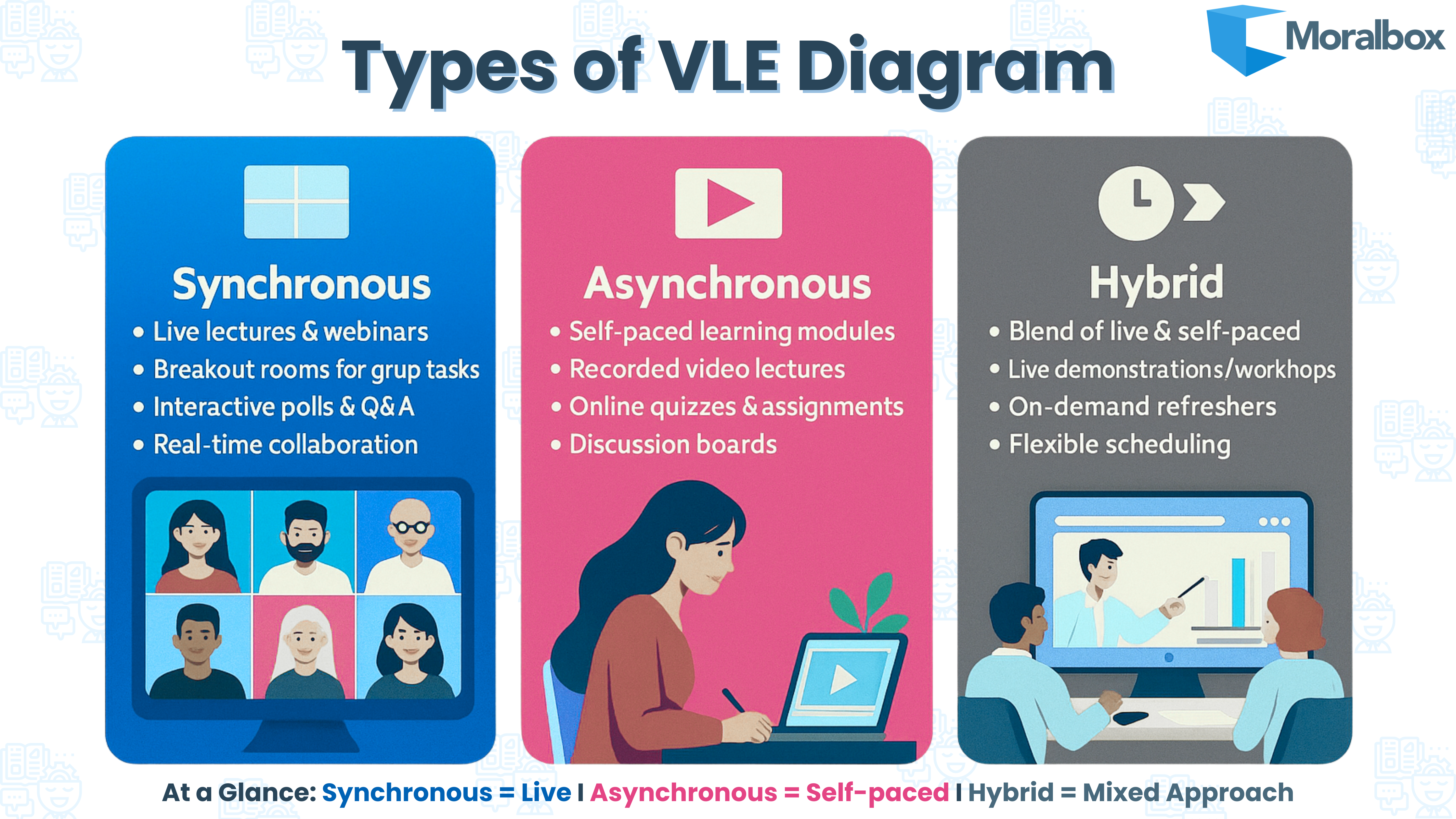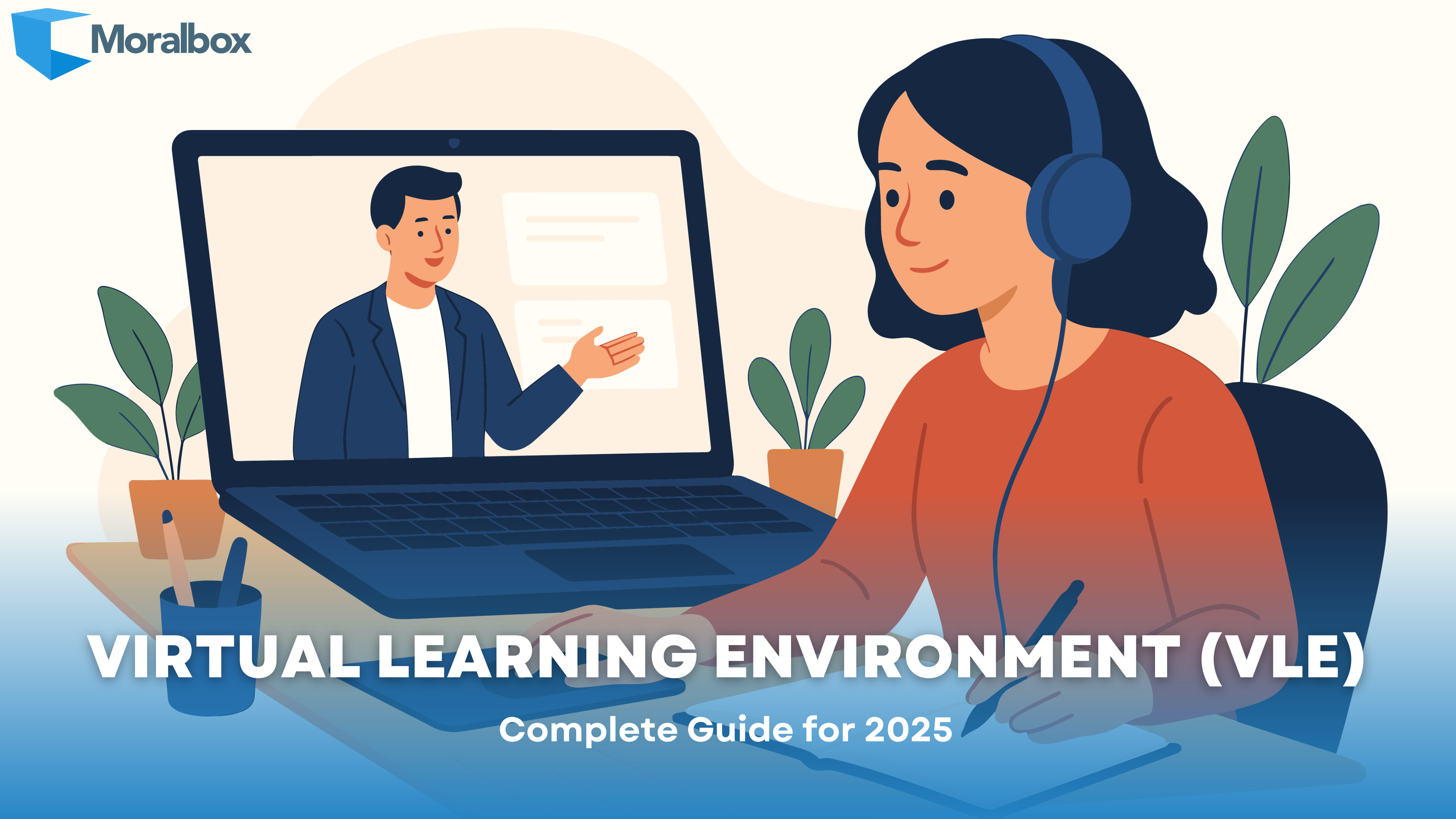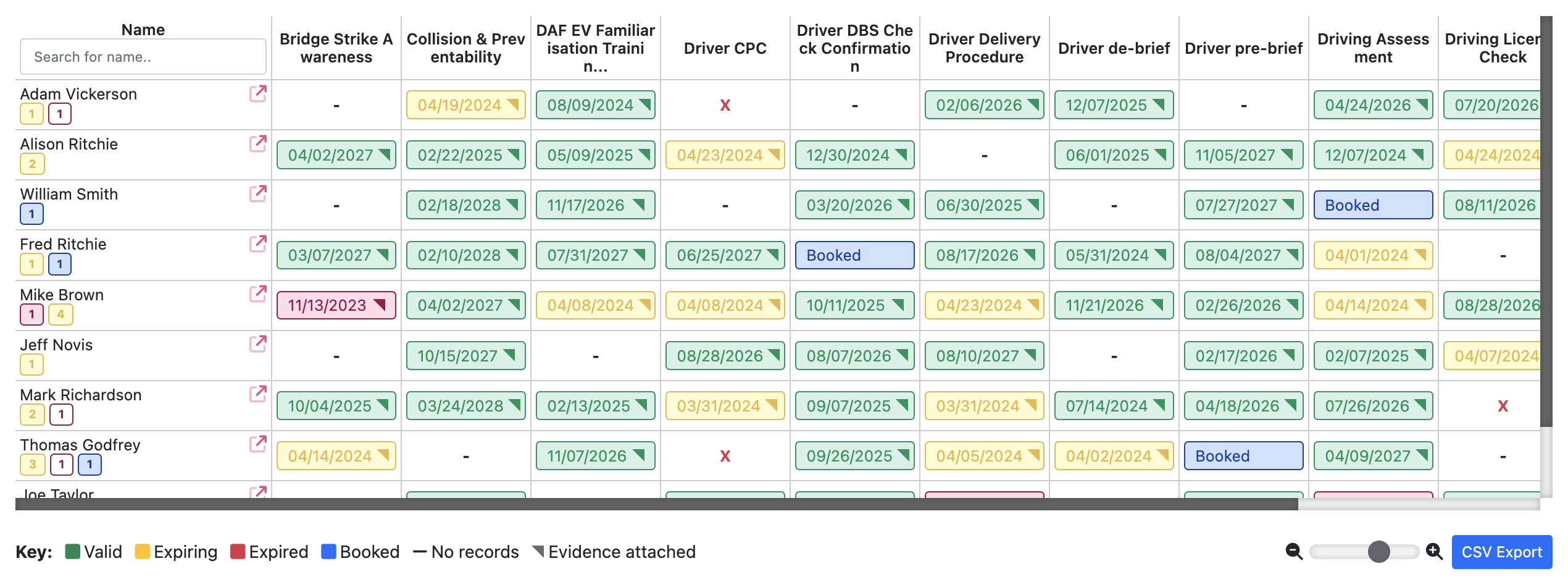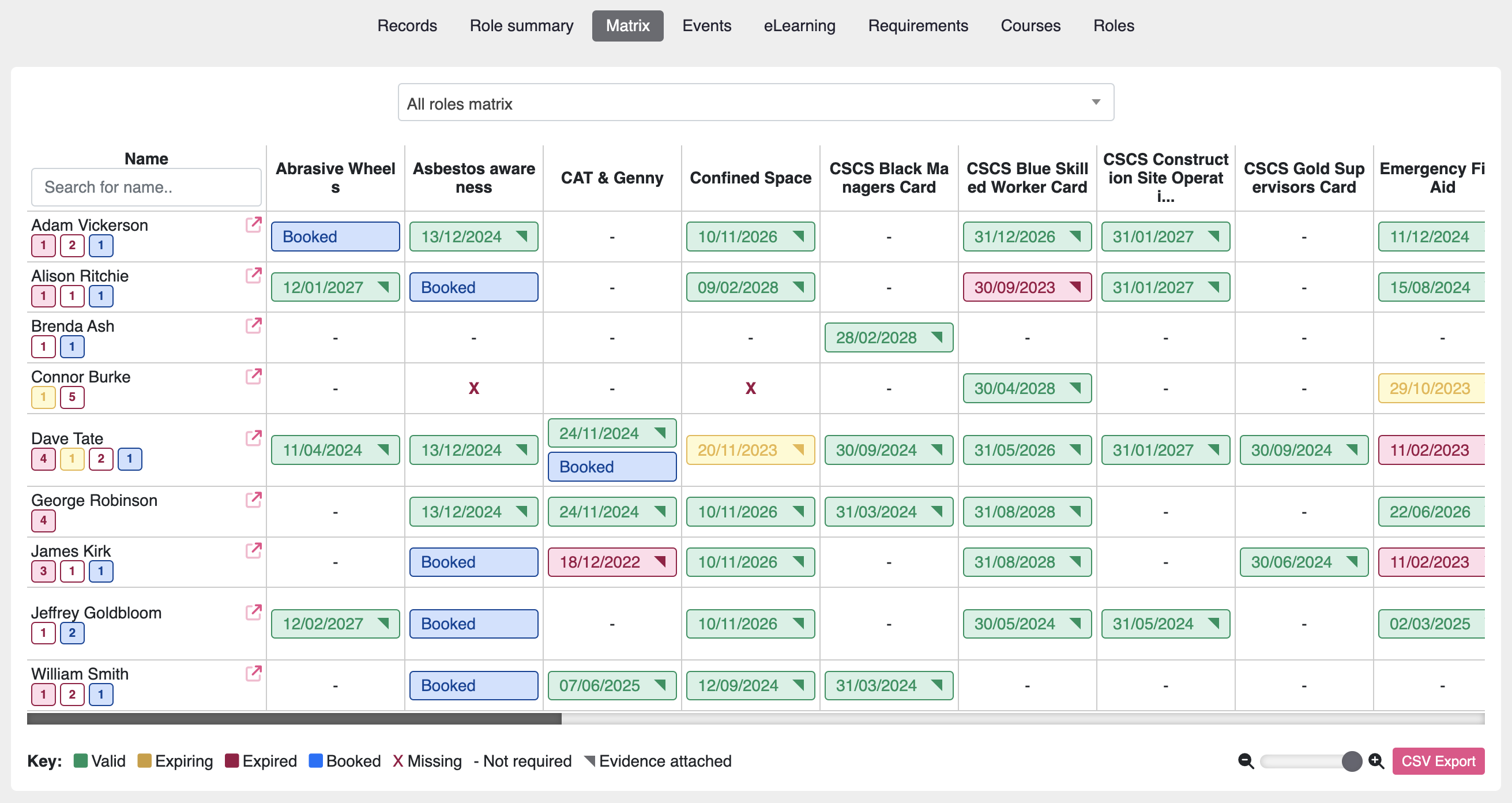Picture this: It’s your first week at university. Instead of juggling paper handouts and notes, you log into one online space where lecture slides, recordings, discussion boards, assignments, grades and everything is neatly organised and accessible from your laptop or phone. This is the power of a Virtual Learning Environment (VLE).
Today, VLEs are more than digital add-ons; they are the backbone of modern education and workplace learning. They don’t just store files, but they structure learning, enable interaction, ensure accessibility, and produce measurable outcomes. Moreover, from schools and universities to healthcare and compliance-heavy industries, VLEs now shape how millions learn every day.
Table of Contents
What is a Virtual Learning Environment (VLE)?
A Virtual Learning Environment (VLE) is a digital hub that integrates content delivery, communication, assessment, and tracking into one system. Unlike a static file repository, a VLE guides learners along structured pathways, ensuring they know what to do, when, and how progress is measured.
For learners, a VLE means one login for readings, live sessions, forums, and grades. For instructors, it’s a control centre with lesson-building tools, analytics dashboards, and the ability to adapt teaching. In workplaces, training managers use VLEs to roll out company-wide courses, automate renewals, and evidence compliance during audits.
UNESCO’s Global Education Monitoring Report (2023) describes digital platforms like VLEs as “core infrastructure” as essential as classrooms and textbooks, while cautioning that they must be inclusive and equitable (UNESCO, 2023).
VLE vs LMS vs LXP: Clearing the Confusion
Although often used interchangeably, VLE, LMS, and LXP have distinct functions:
| Aspect | VLE | LMS | LXP |
| Purpose | Deliver structured learning experiences | Manage, track, and report compliance | Curate and personalise content |
| Users | Students, educators, trainers | HR, compliance officers | Self-driven learners |
| Strengths | Interaction, collaboration, community feel | Certificates, reporting, audit readiness | Recommendations, AI-driven learning |
| Limitations | Limited compliance controls unless paired with LMS | Often rigid, administrator-focused | Less effective for structured curricula |
In practice, many organisations blend them:
- A university may use a VLE for teaching and an LMS for exam regulations.
- A corporate training team may use an LMS for compliance but add a VLE for engaging delivery.
- An employee development programme may add an LXP for self-directed learning alongside the VLE and LMS.
The EDUCAUSE Horizon Report (2023) highlights “blurring boundaries between modalities” and HyFlex teaching as key trends, showing how ecosystems of tools are replacing single solutions (EDUCAUSE, 2023).
👉 Related reading: For a more detailed comparison of LMS vs LXP, visit our in-depth guide here: LXP vs LMS
Types of VLE
VLEs can be designed in three broad formats:
- Synchronous (Live): Learners and teachers connect in real time via live video, polls, or collaborative whiteboards. For instance, a law school running moot court simulations online.
- Asynchronous (Self-paced): Content and assessments are available anytime. Flexible, but on the other hand, risks isolation if not designed well. For Example, a multinational company offering on-demand induction modules.
- Hybrid (Blended): Combines live and self-paced learning. This is now the most common format, balancing structure with flexibility. Like, in Healthcare staff attending live training, then completing refresher quizzes online.

The OECD Digital Education Outlook (2023) notes that blended approaches are increasingly embedded in education ecosystems because they balance accessibility with accountability (OECD, 2023).
Key Features of a Strong VLE
A high-quality VLE goes beyond file storage. Core features include:
- Content delivery & standards: SCORM and xAPI support ensures content is portable and learning events can be tracked consistently. Moreover, the ADL Initiative (2023) confirms xAPI is now an IEEE standard, enabling cross-platform analytics.
- Collaboration tools: Discussion boards, chat, and peer review build community and boost retention. Similarly, these tools help replicate the interactivity of a classroom environment.
- Assessment & feedback: From auto-graded quizzes to observation forms, giving learners timely insights. Consequently, learners and instructors can adjust quickly to improve outcomes.
- Analytics dashboards: To monitor progress, completion, and performance trends. Therefore, administrators gain valuable data to guide future training or teaching strategies.
- Accessibility: Compliance with WCAG 2.2, finalised in October 2023, ensures usability for learners with disabilities (W3C, 2023). As a result, learning becomes more inclusive and equitable.
- Mobile & offline access: Vital for learners in low-connectivity regions. In addition, this flexibility supports remote and hybrid learning environments.
👉 Related reading: Schön’s Reflective Practice to explore how reflection can be built into digital learning.
Benefits
When implemented effectively, VLEs deliver measurable value:
- Flexibility & access: Learners can study anytime, anywhere. As a result, education becomes more adaptable to different schedules and lifestyles.
- Positive learner experiences: In Jisc’s 2024/25 survey, 86% of higher education students rated their digital learning environment as “above average,” and 84% rated the quality of their digital learning experience positively (Jisc, 2025). This demonstrates that well-designed VLEs can significantly boost learner satisfaction.
- Support with technology: 77% rated institutional support for learning with technology as above average (Jisc, 2025). Moreover, such support ensures that students are not left behind due to technical barriers.
- Cost efficiency: Reduced reliance on physical classrooms and print materials. Therefore, organisations can reinvest savings into improving content and delivery.
- Scalability: From dozens to thousands of learners without scaling admin burden. In addition, this makes VLEs suitable for both small teams and large institutions.
Challenges
Despite their benefits, VLEs face challenges that require careful planning:
- Infrastructure & access: In the same Jisc survey, many students reported issues with Wi-Fi or suitable devices, showing how uneven access still limits participation (Jisc, 2025). Consequently, this often stems from reliance on home internet quality and personal device ownership.
- Staff workload & confidence: In Jisc’s 2023/24 survey, 60% of teaching staff rated their digital environment positively, down from 64% the year before (Jisc, 2024). Respondents highlighted lack of time, limited training, and infrastructure gaps as key barriers. These challenges often occur because staff are balancing teaching, admin, and research alongside adopting new technologies.
- Governance & equity: The OECD (2023) emphasises that digital education systems must be trustworthy and equitable. However, without careful governance, rapid tech adoption risks deepening divides.
- Content quality: Even the best VLE fails if it is treated as a file dump rather than a structured, interactive learning environment. This typically happens when organisations prioritise “delivery” over learning design.
Industry Applications of VLEs
VLEs are now widely used beyond education:
- Higher Education: Blended classrooms, flipped learning, and HyFlex models.
- Corporate Training: Onboarding, leadership development, and skill refreshers.
- Healthcare: Simulation training and CPD tracking across hospitals.
- Vocational Training: Online theory combined with workplace-based assessment.
- Safety & Compliance: Automating renewals, tracking certificates, and evidencing compliance.
👉 This is where the Moralbox Training Matrix adds value to the organisations by linking training outcomes within a VLE to compliance needs, ensuring staff are not only trained but audit-ready.
Future of VLEs
Looking ahead, VLEs are expected to evolve with:
- AI-driven personalisation: tailoring pathways and automating marking.
- HyFlex teaching models: giving learners the choice to attend live or online.
- Data ecosystems: OECD (2023) highlights interoperability between national learning platforms and assessments. As a result, institutions will be able to integrate learning data across systems for deeper insights.
Altogether, these trends show that VLEs are becoming not just supportive tools, but rather essential digital infrastructures shaping education’s future.
Bonus Resource: VLE Evaluation & Selection Checklist
Choosing the right VLE can feel overwhelming with so many platforms available. To make this process easier, we’ve created a bonus checklist you can use if you’re actively exploring or comparing solutions.
This free resource includes:
- Goal alignment prompts
- Accessibility quick-check (WCAG 2.2)
- SCORM/xAPI compliance
- Integration requirements (HRIS, SIS, SSO)
- ROI and analytics considerations
It’s not essential to understanding VLEs, but it’s a practical tool if you want to move from theory into real-world decision-making.
Conclusion
Virtual Learning Environments (VLEs) have moved from being optional tools to becoming core infrastructure for modern education and training. They provide flexibility, scalability, and inclusivity, allowing learners to engage in ways that suit their context. At the same time, they give educators and organisations valuable insight through data and analytics to improve learning design and outcomes.
The challenge now is not simply adopting a VLE but making sure it is used to its full potential, supporting active engagement, critical reflection, and meaningful application of knowledge. By combining sound pedagogy with the right digital tools, VLEs can foster deeper learning and prepare both students and professionals for the demands of rapidly changing environments.
FAQs
What is a VLE?
A digital hub that combines content, communication, and tracking in one space.
How is a VLE different from an LMS?
VLEs focus on learning experiences, while LMSs focus on compliance and administration.
Do VLEs need SCORM/xAPI?
Yes. SCORM ensures portability, while xAPI enables richer analytics across systems (ADL Initiative, 2023).
Which accessibility standard applies?
WCAG 2.2, published in October 2023 (W3C, 2023).
Are VLEs only for schools?
No. They are widely used in corporate training, healthcare, vocational education, and compliance-heavy industries.
References
ADL Initiative (2023) ‘xAPI officially becomes a published IEEE standard’. ADL Initiative. Available at: https://adlnet.gov/news/2023/11/22/xAPI-Officially-Becomes-a-Published-IEEE-Standard/ (Accessed: 22 September 2025).
EDUCAUSE (2023) 2023 EDUCAUSE Horizon Report: Teaching and Learning Edition. Available at: https://library.educause.edu/-/media/files/library/2023/4/2023hrteachinglearning.pdf (Accessed: 22 September 2025).
Jisc (2024) Teaching staff digital experience insights survey 2023/24: UK higher education findings. Available at: https://repository.jisc.ac.uk/9702/1/DEI-2024-teaching-staff-he-report.pdf (Accessed: 22 September 2025).
Jisc (2025) Student digital experience insights survey 2024/25: UK higher education findings. Available at: https://repository.jisc.ac.uk/10242/1/DEI-2025-student-he-report.pdf (Accessed: 22 September 2025).
OECD (2023) OECD Digital Education Outlook 2023: Towards an Effective Digital Education Ecosystem. Paris: OECD Publishing. Available at: https://www.oecd.org/en/publications/oecd-digital-education-outlook-2023_c74f03de-en.html(Accessed: 22 September 2025).
UNESCO (2023) 2023 Global Education Monitoring Report: Technology in education – A tool on whose terms? Paris: UNESCO. Available at: https://unesdoc.unesco.org/ark:/48223/pf0000386165 (Accessed: 22 September 2025).
W3C (2023) What’s new in WCAG 2.2. World Wide Web Consortium. Available at: https://www.w3.org/WAI/standards-guidelines/wcag/new-in-22/ (Accessed: 22 September 2025).

Ananya is a Marketing Executive at Moralbox, passionate about creating content that connects learning with business impact.


